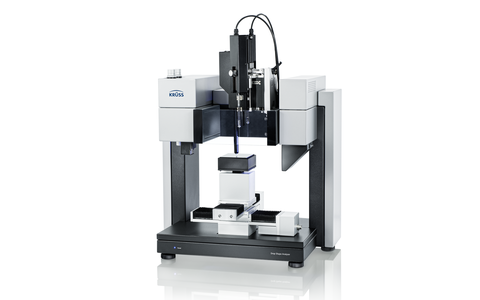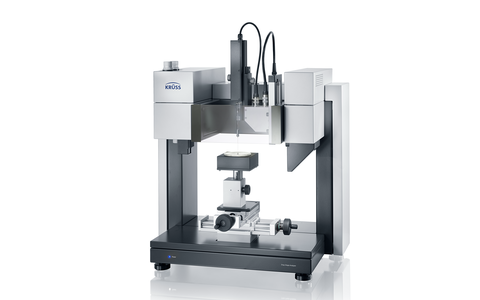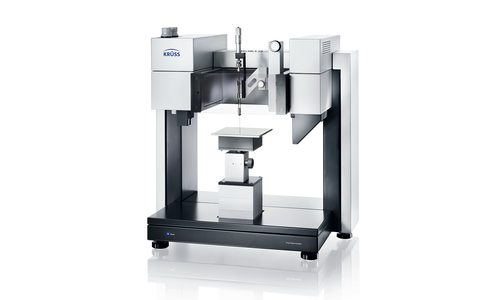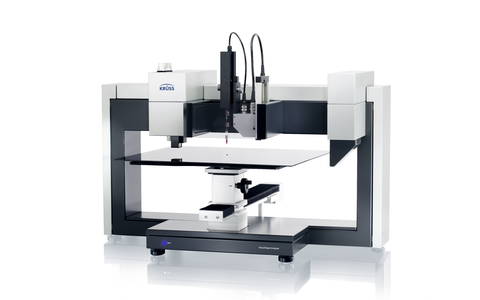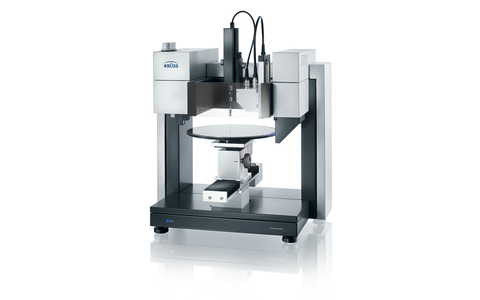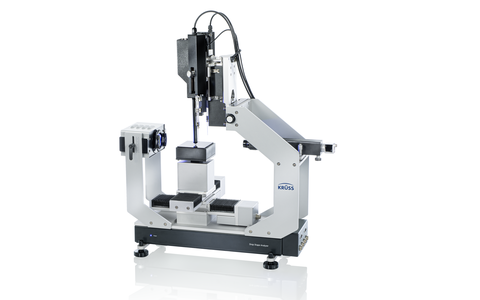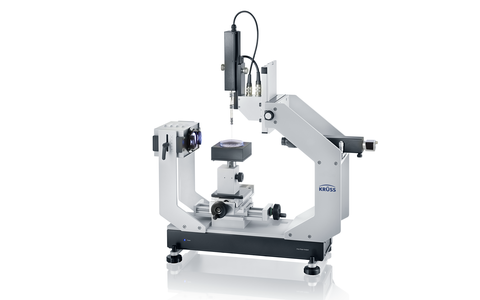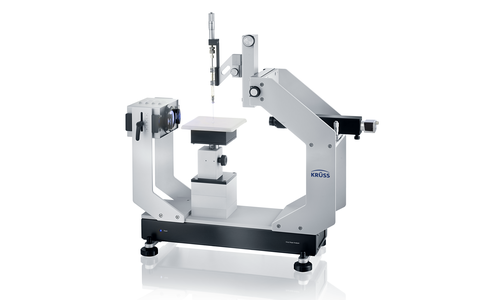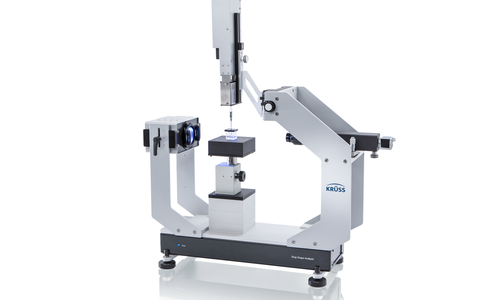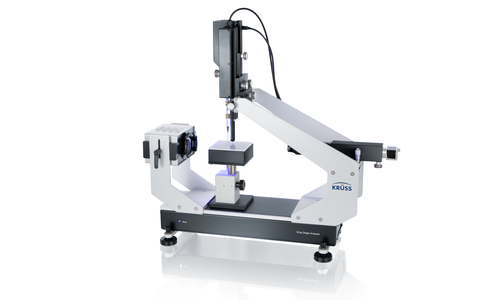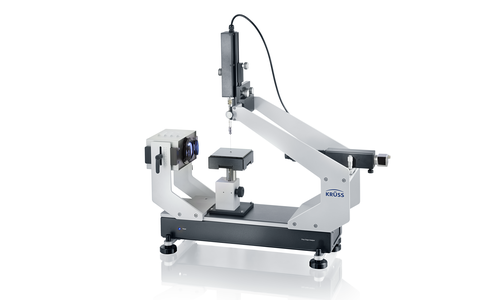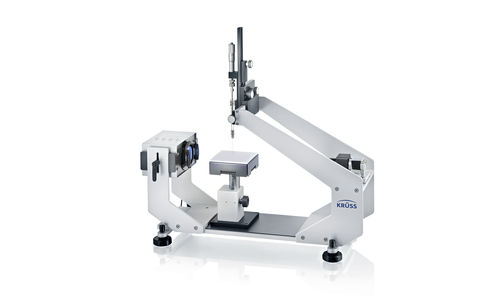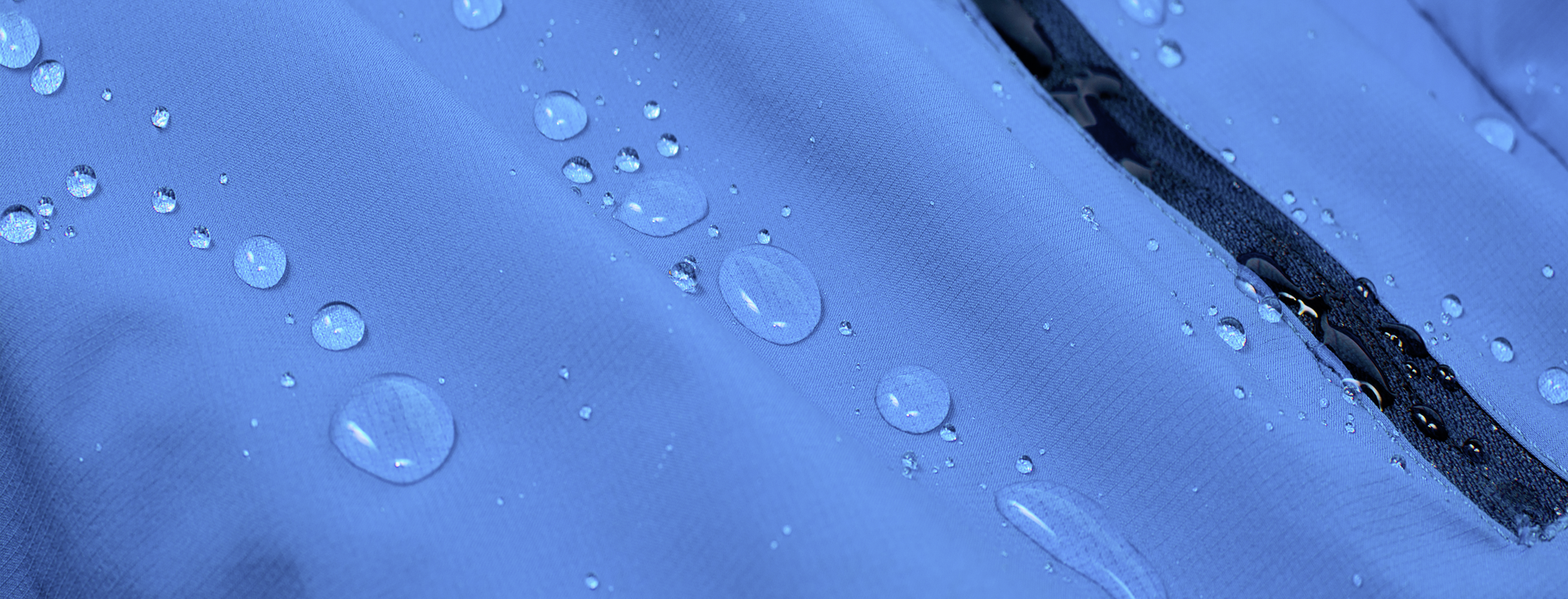
Wetting and coating of textiles
Contact angle and surface tension for optimizing the coating of functional textiles
Synthetic or natural fibers and fabrics are coated in order to produce functional textiles for particular tasks, such as rainproofing or providing resistance to fire. As well as the coating effect achieved, the uniformity, adhesion and long-term stability of the coating are important for the quality of the fabric. Our tensiometers and our contact angle measuring instruments analyze these quantities and are therefore often used in quality assurance and product development.
Typical applications of functionally coated fibers
- Water-repellent, breathable sports and leisure clothing
- Protective clothing
- Pharmaceutical fabrics such as plaster material or washable coatings
- Rainproofing of tents, marquees and vehicle tarpaulins
- Self-cleaning textiles
Wetting of fibers and fabrics by the coating material
Uniform coating with a liquid coating material requires good wetting. Surfactants as wetting agents to reduce the surface tension of the coating material are often used to achieve this end. Our semi-automatic or fully automatic tensiometers are used for the precision measurement of surface tension.
Our tensiometers measure the efficiency of the surfactant used by means of the critical micelle concentration (CMC). This gives the concentration above which the surface tension does not reduce further; expensive overdosing can therefore be avoided by knowing this quantity. Our Force Tensiometers can measure the CMC automatically and with a large dilution range, thus guaranteeing high accuracy.
Surfactants with high mobility, which quickly reduce the surface tension, are needed on account of the frequently very fast production processes. Our mobile and stationary bubble pressure tensiometers measure the surface tension at surface ages down to a few milliseconds. The measurements indicate the time at which the required value of surface tension is reached. This enables surfactants to be selected and dosed to match the process speed.
Wettability of the fabric or individual fibers
The wettability of the fibers or fabric is reflected in the contact angle. The wetting should be as good as possible before coating to ensure optimum affinity between coating material and fibers. The contact angle also characterizes the finished coating and, for example, describes the effectiveness of a hydrophobic coating of the fibers. It can therefore be used for ensuring the quality of the coating process.
Our tensiometers measure the contact angle based on the wetting force of fabrics or fiber bundles when coming into contact with the liquid. A tensiometer equipped with a highly sensitive force sensor can measure the tiny wetting forces even on a single fiber.
Our drop shape analysis measuring instruments determine the contact angle with dispensed drops. Here too, single fibers can be measured with the help of picoliter dosing and a microscope lens.
Liquids, which are used when measuring the contact angle, are often absorbed by fabrics. The contact angle on fabrics is therefore frequently measured with a reverse arrangement based on an air bubble, which is placed below with the pre-wetted sample (captive bubble). The captive bubble method is a standard function of our stationary contact angle measuring instruments.
Adhesion and long-term stability of the coating
The machine-washing and drying of textiles and other mechanical and thermal stresses place great demands on the stability of the coating. If measurements of the surface tension of the coating material are combined with measurements of the surface free energy of the fibers or fabric, the work of adhesion and the interfacial tension can be calculated. The work of adhesion is a measure of the adhesion. The interfacial tension describes the inherent instability and the tendency to detach due to re-wetting, for example when water penetrates fine cracks. Defective adhesion can be specifically avoided and the coating stability optimized if these quantities are known.
Characterization of self-cleaning textiles
Water drops roll off ultrahydrophobically coated fabrics taking dirt particles with them. Such coatings are therefore used for self-cleaning textiles, for example for marquees. We have developed special tilting tables, with which the roll-off behavior of a drop can be analyzed, for our optical contact angle measuring instruments. The roll-off angle describes the angle of inclination at which a dispensed drop starts to move.
Optimizing the lamination of a fabric
Laminations are hot-melt and adhesive coatings by means of solid coating materials. The adhesion and wetting in the hot state is definitive for the quality of these coatings. Our comprehensive high-temperature accessories enable the surface tension and contact angle to be measured at the appropriate coating temperatures. This therefore enables the process to be simulated and optimized with regard to the actual process conditions.
Investigation of the release paper in transfer coating
In transfer coating, the coating is first applied to a release paper where it cures. In a second step, the coating is detached from the release paper and applied to the fabric. For the quality of the process, it is necessary for the coating to adhere to the fabric better than to the paper. The quality of the surfaces concerned can be evaluated and optimized by measuring the respective adhesion with our contact angle measuring instruments.






